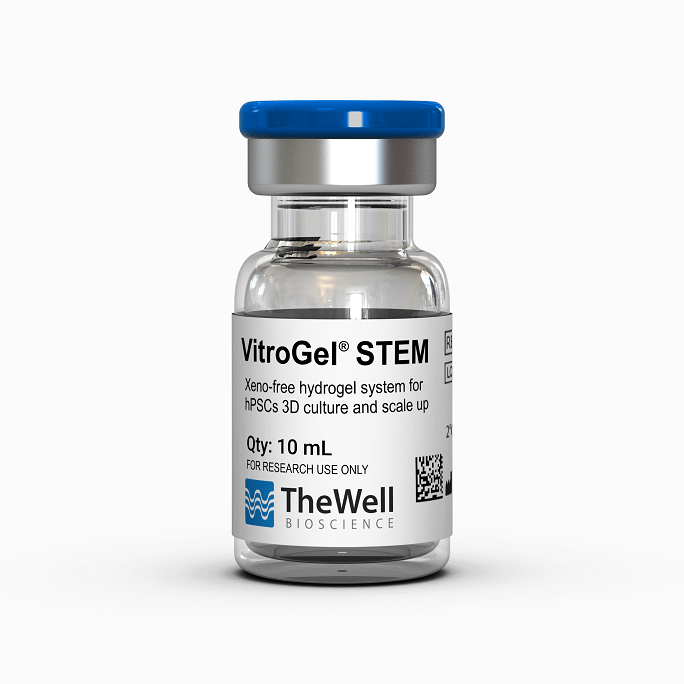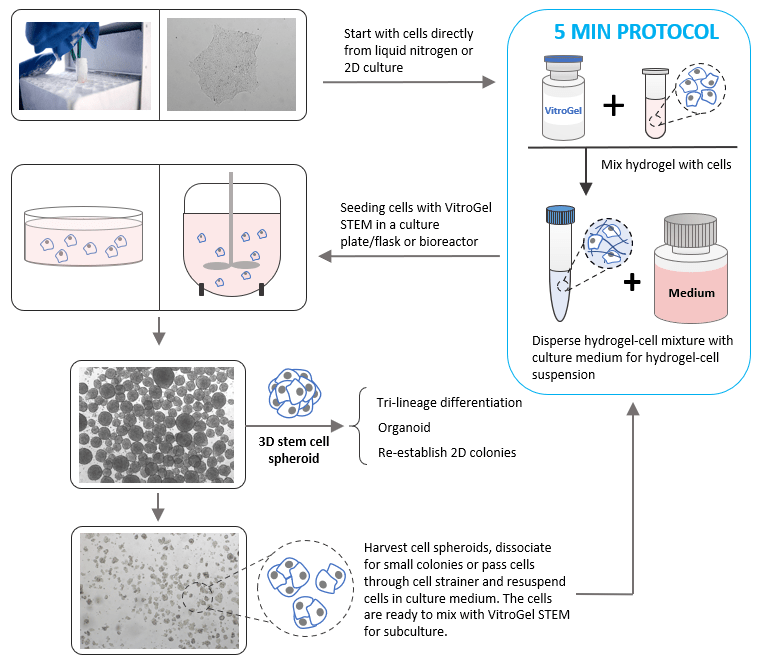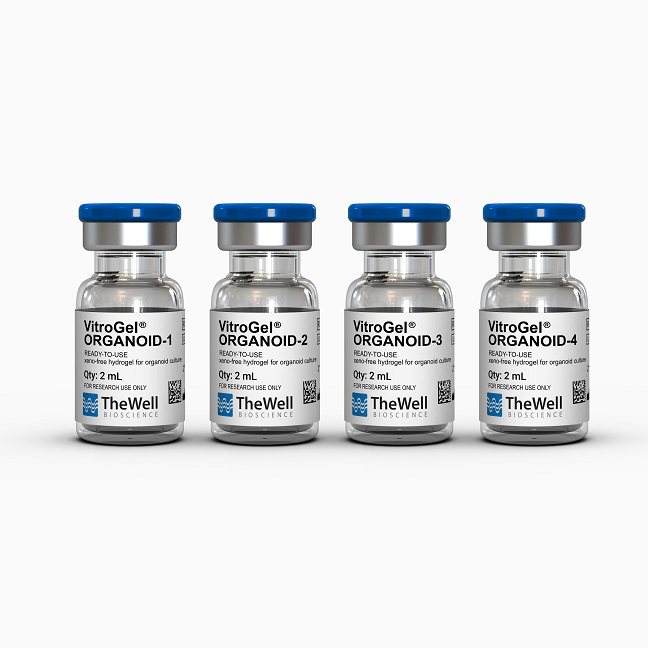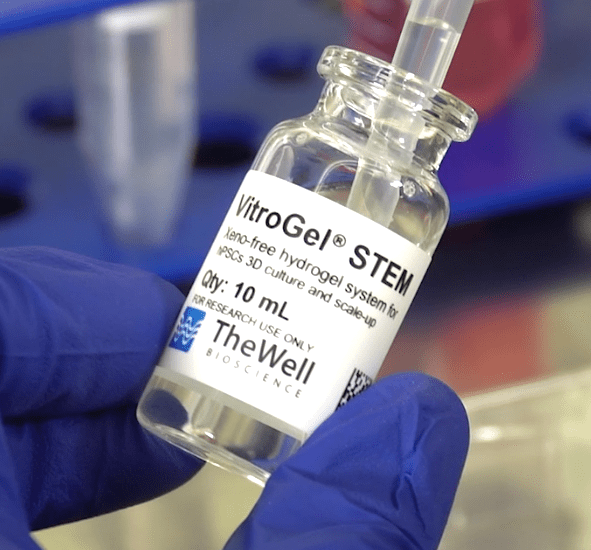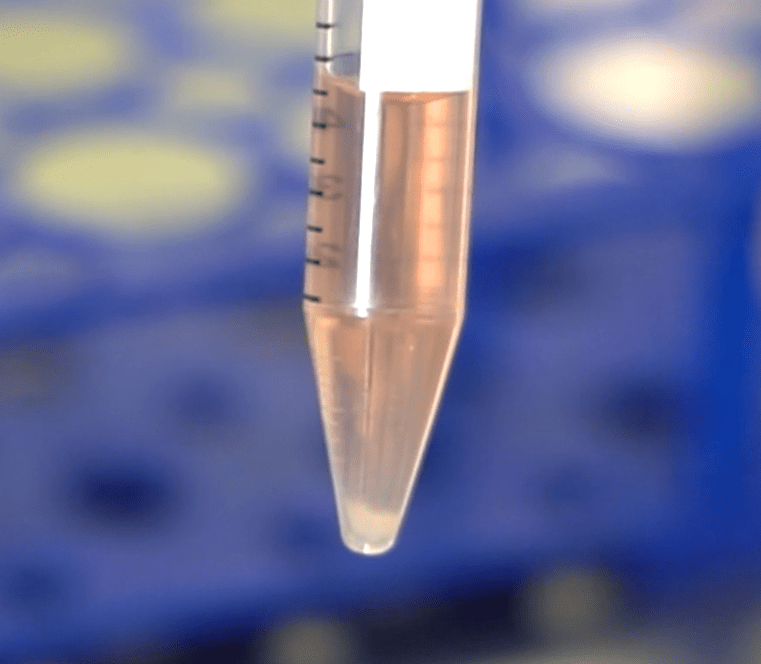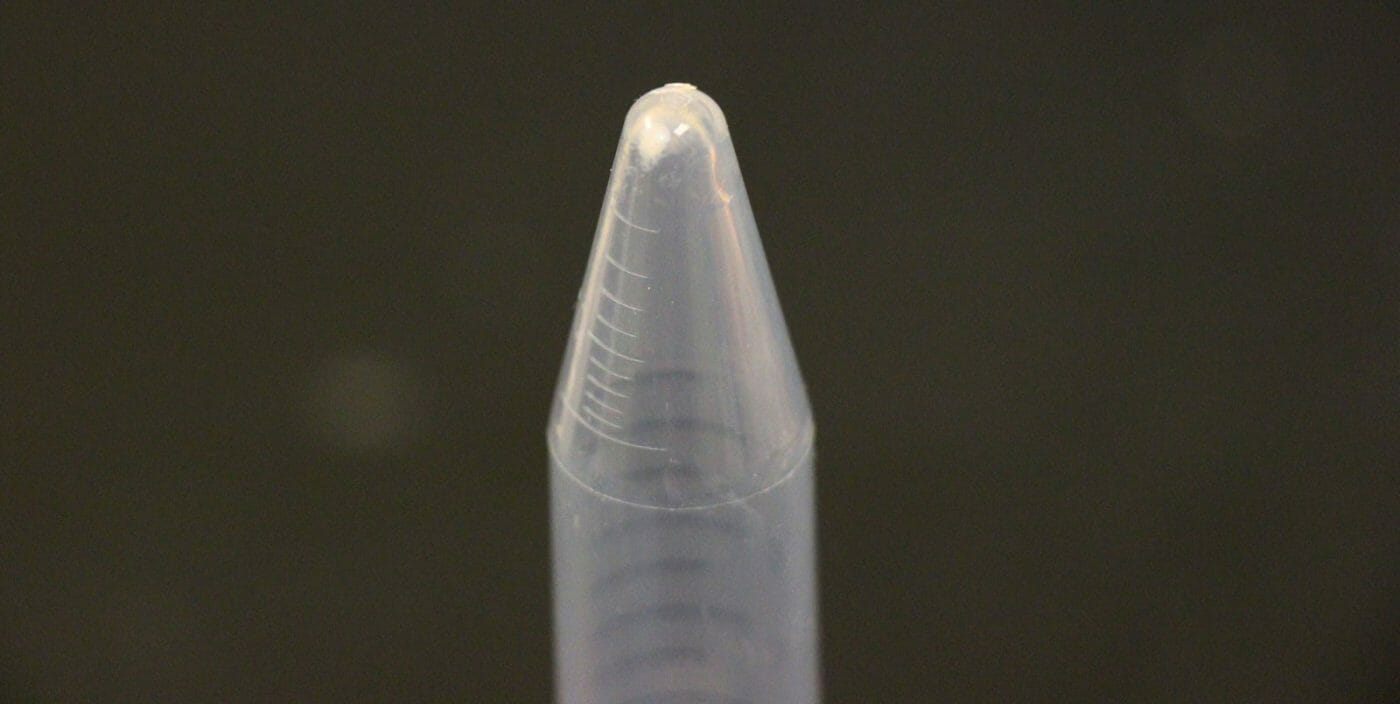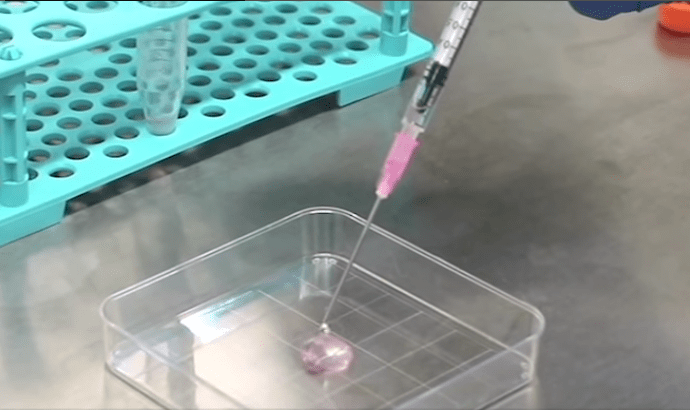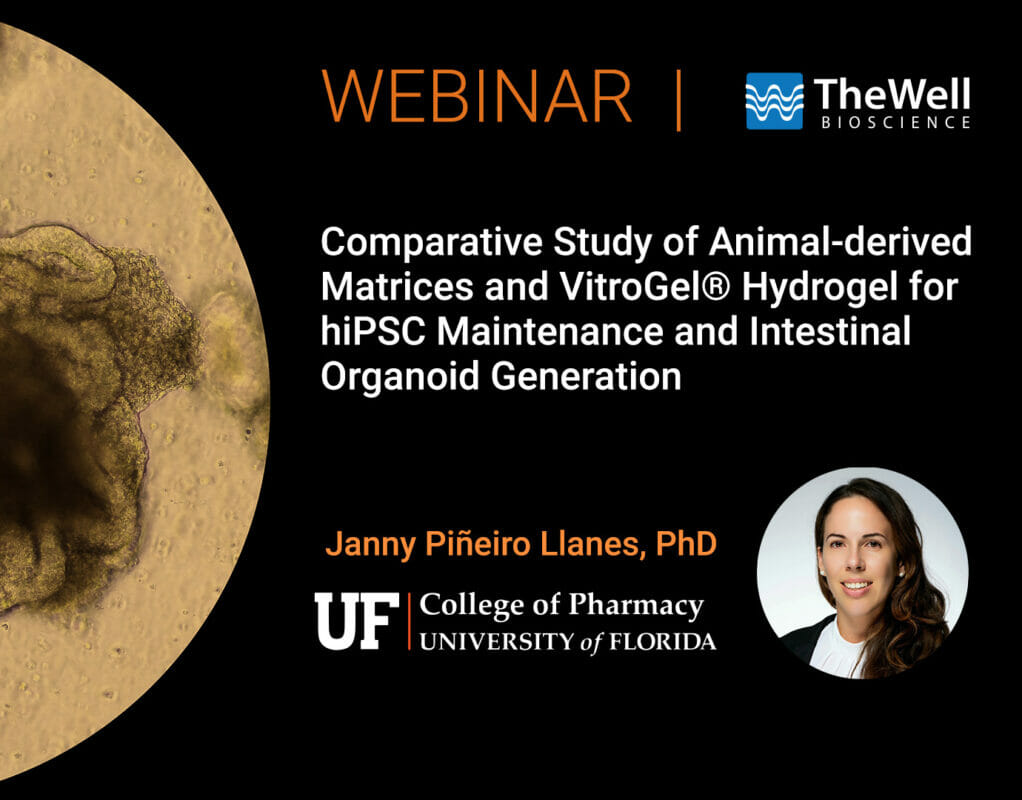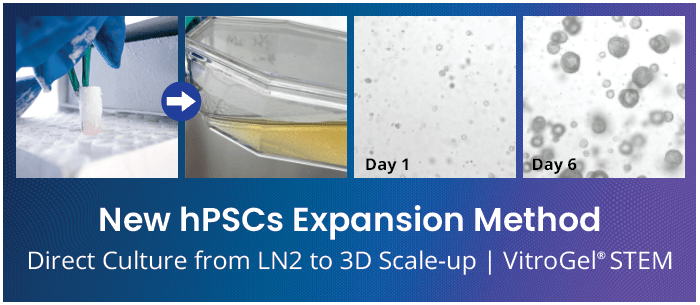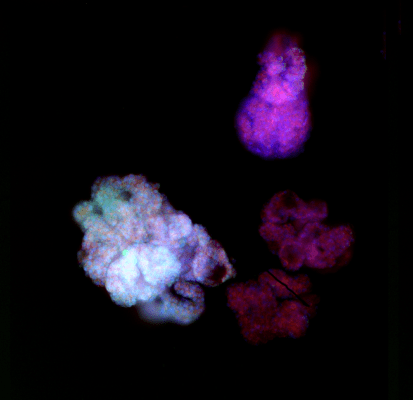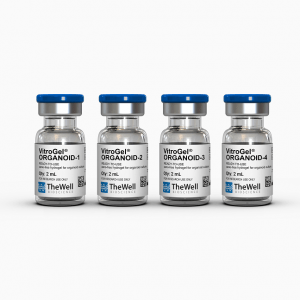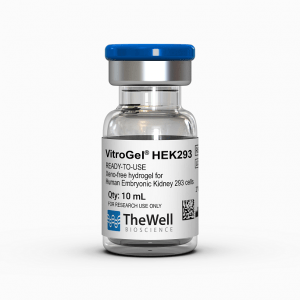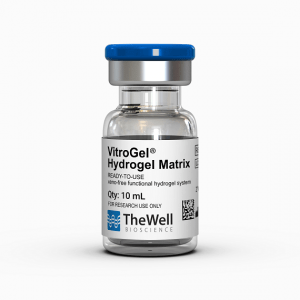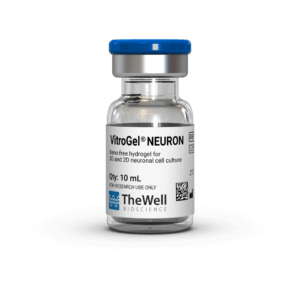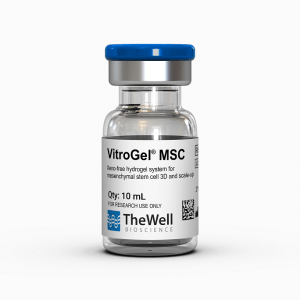High cell quality
Yields high-quality 3D stem cells with high success rate for downstream differentiation.
VitroGel® STEM
ready-to-use, xeno-free (animal origin-free) hydrogel system for hPSCs 3D static suspension culture and scale-up
VitroGel® STEM
Ready-to-use, xeno-free hydrogel to support both scale-up and 3D differentiation of hPSCs

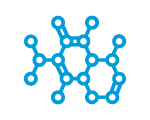
Xeno-free
100% synthetic. Animal & human origin-free, biofunctional hydrogel.

High Expansion rate
Faster growth rate than traditional 2D culture and yields uniform spheroid sizes.

5-min. protocol
Establishes 3D stem cell expansion directly from liquid nitrogen with simple mixing steps, no matrix coating required.

Easy cell harvesting
Simple and efficient cell harvesting by either centrifuge or the non-enzymatic VitroGel® Organoid Recovery Solution.
Flexible and compatible
Compatible with most hPSC culture media and tissue culture vessels.
VitroGel® STEM is a xeno-free (animal origin-free) hydrogel system developed to support scale-up and 3D differentiation of human pluripotent stem cells (hPSCs) to create a high-throughput system to model various tissue and disease states.
This hydrogel system is ready to use with an optimized formulation that fully supports the rapid expansion of high-quality 3D stem cell spheroids with pluripotent properties. hPSCs directly thawed from liquid nitrogen or passaged from 2D matrix-coated culture vessels can be immediately mixed with the hydrogel solution for static suspension cultures. Moreover, the optimization protocol is ideal for time-sensitive experiments, as it does not require excessive medium exchanges, which can ultimately save time and materials. This hydrogel system is compatible with most hPSC culture media and tissue culture vessels. The 3D stem cell spheroids developed using this system can be used for further sub-cultures, patterned differentiation, organoid development, or re-establishing 2D culture morphologies.
“Just add cells” 5 min protocol. No matrix coating required.
VitroGel® STEM is ready-to-use. Just mix it with your hPSCs. No laborious matrix coating is required to maintain and expand your stem cells.
Specifications
| Formulation | Xeno-free, functional hydrogel |
| Use | 3D static suspension culture for hPSCs |
| Operation | Ready-to-use at room temperature |
| Biocompatibility | Biocompatible, safe for animal studies |
| Injection | Injectable hydrogel for in vivo studies and lab automation |
| Cell Harvesting | VitroGel Organoid Recovery Solution 5-15 min cell recovery |
| pH | Neutral |
| Storage | Store at 2-8°C. Ships at ambient temperature |
| Sizes | 10 mL and 2 mL |
| Number of Uses | (10 mL) 90-180 mL suspension culture (2 mL) 15-30 mL suspension culture |
Recommended Product
VitroGel® ORGANOID Discovery Kit
ready-to-use, xeno-free hydrogel system for organoid culture.
Protocols and Resources
VitroGel® STEM | Natural ECM |
|
Culture Method | 3D Suspension | 2D Matrix Coating |
Xeno-free | Yes | No |
3D Spheroid Formation | Yes | No |
3D Differentiation (directly) | Yes | No |
Easy to scale-up | Yes | No |
Preparation Time | < 10 mins | 2 hours + |
Cell viability after seeding | ●●●●● | ●●○○○ |
Cell Proliferation/b> | ●●●●● | ●●●○○ |
Easy Cell Harvesting | ●●●●● | ●●○○○ |
Easy Cell Quality for Differentiation | ●●●●● | ●●○○○ |
Easy for Sub-culture | ●●●●● | ●●●○○ |
Application Notes
Data and References
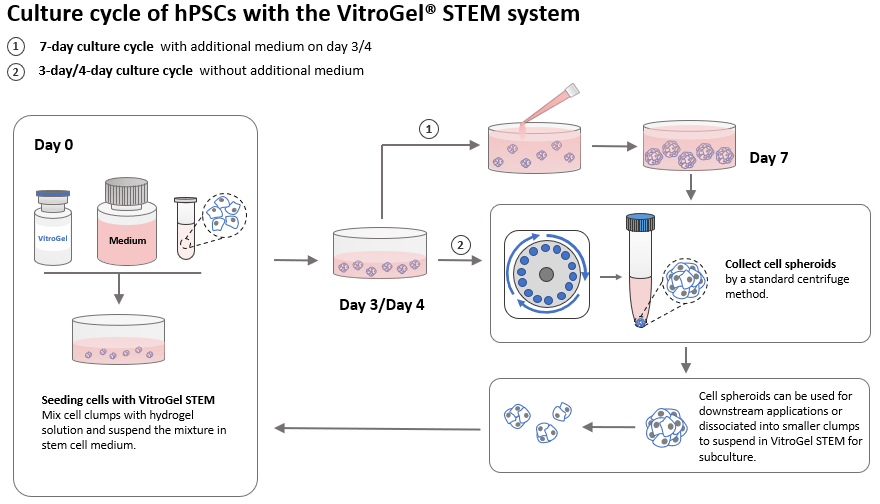
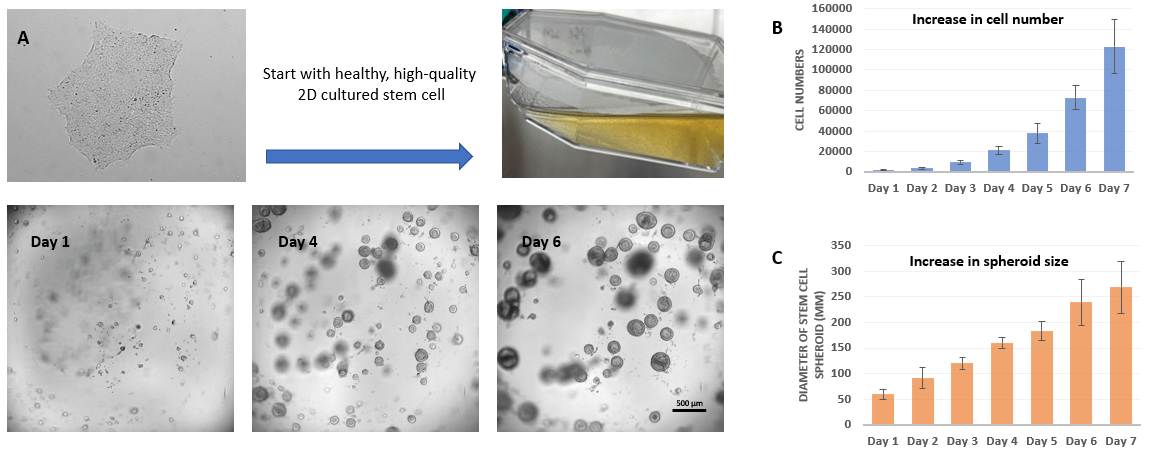 Figure 1. 3D static suspension culture of hPSC from 2D matrix culture
Figure 1. 3D static suspension culture of hPSC from 2D matrix culture
After 24 hours, small hPSC spheroids start to form. From day 1 to 6, cells in the suspension cultures quickly grow, leading to the generation of healthy and high-quality stem cell spheroids. After day 3, cell numbers grew exponentially (Figure 1B), and spheroid size steadily increases (Figure 1C). The hPSC spheroids display characteristics of shallow craters or pockmarks, indicating expression of hPSC markers and successful expansion of healthy and high-quality stem cell spheroids. The resulting spheroids provide researchers with large numbers of healthy hPSCs for further experiments.

Figure 2. 3D static suspension culture of hPSC directly from Liquid Nitrogen (LN2)
Start the suspension culture by using healthy and high-quality cells directly from LN2. hPSC-hydrogel aggregates successfully to form healthy spheroids after 1 day in culture. The hPSC spheroids continue to expand from day 1 to 6 (Figure 2A). The resulting hPSC spheroids also show hallmark features of healthy and high-quality stem cell spheroids, i.e., shallow craters or pockmarks. Figure 2B shows that hPSC static suspension cultures from liquid nitrogen are positive for Alkaline Phosphatase, indicating successful expansion of healthy stem cell populations.

Figure 3. Immunofluorescence images of hPSC spheroids with key pluripotent stem cell markers
VitroGel STEM ensures the undifferentiated state of stem cell lines during scale-up. As shown in Figure 3, hPSC aggregates in VitroGel STEM hydrogel and retain pluripotency after 7 days, evidenced by the expression of key pluripotent stem cell markers, SSEA4, OCT4, SOX2, and TRA-1-60.
References/Publications
| Size | 2 mL, 10 mL |
|---|

